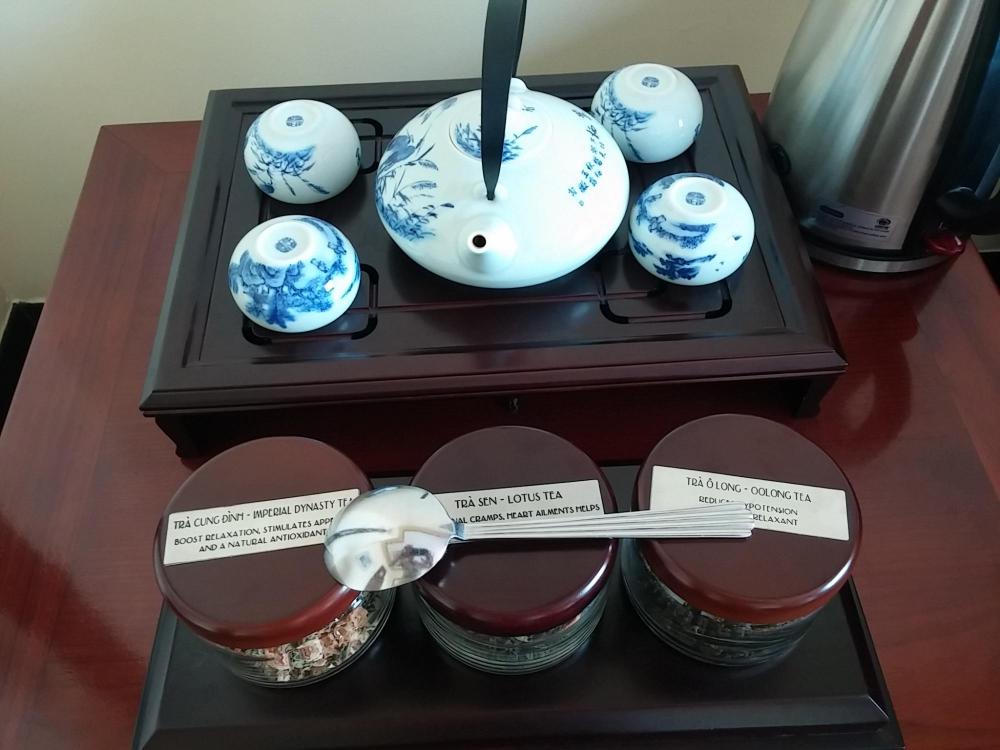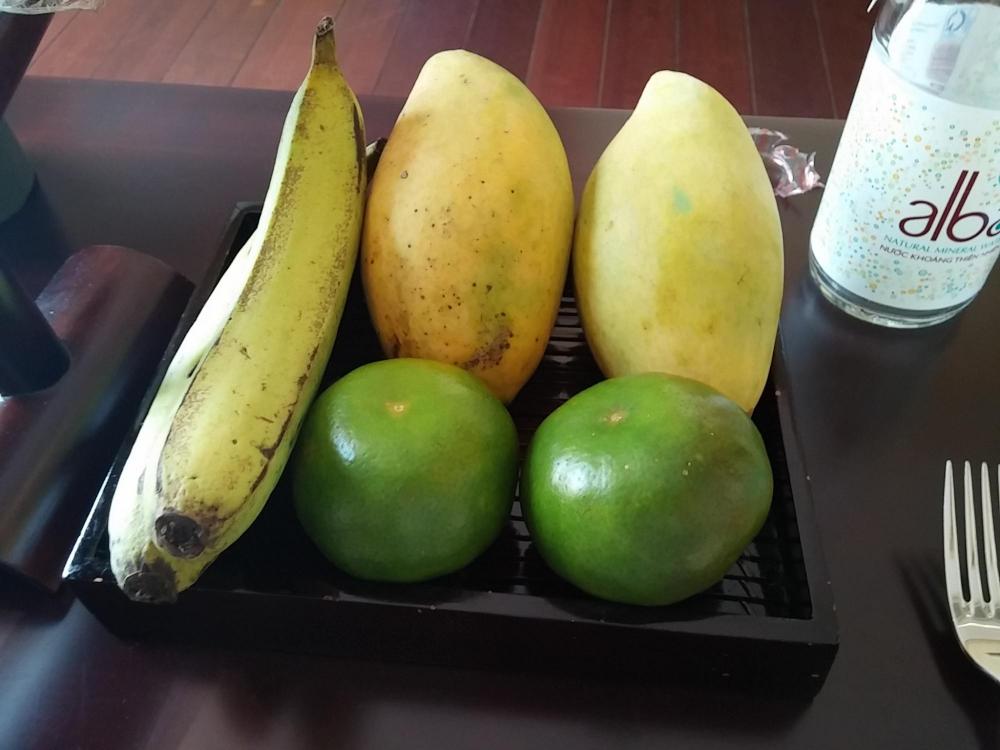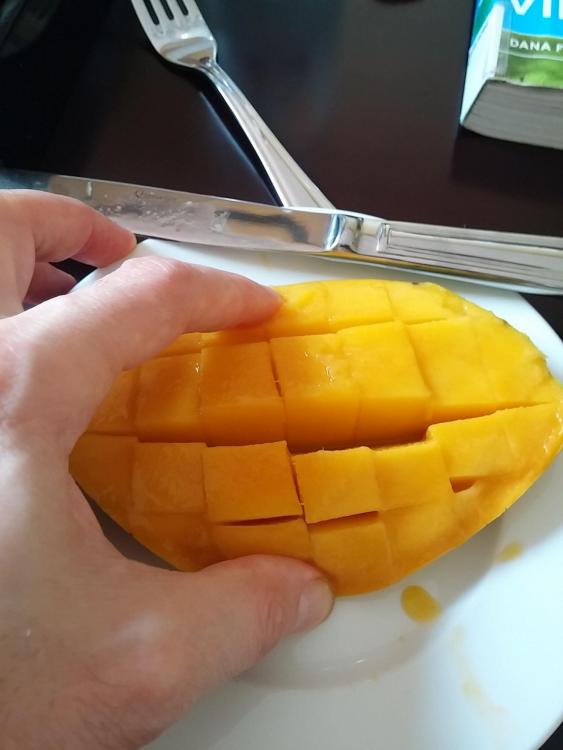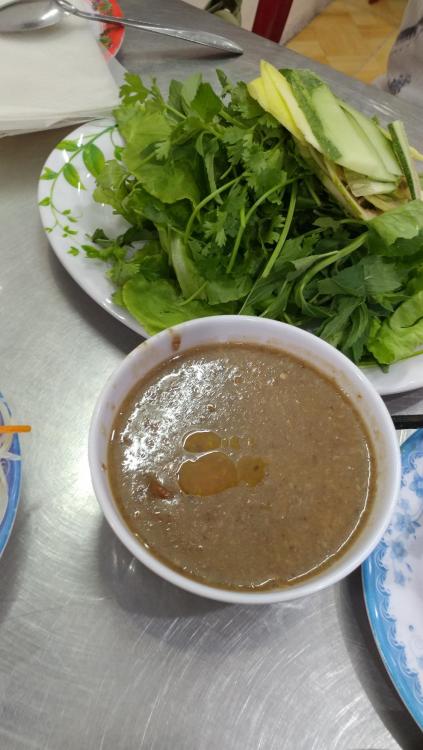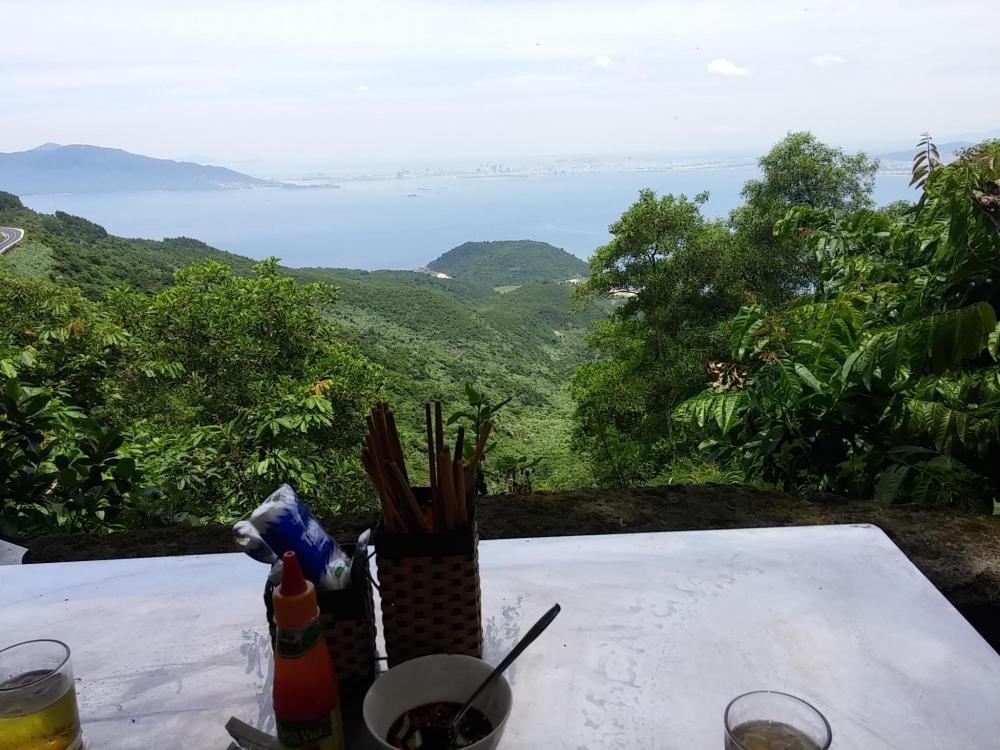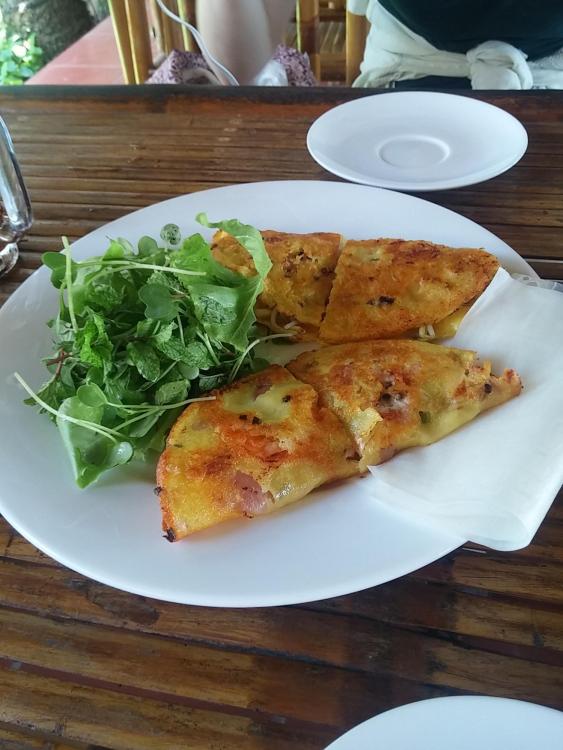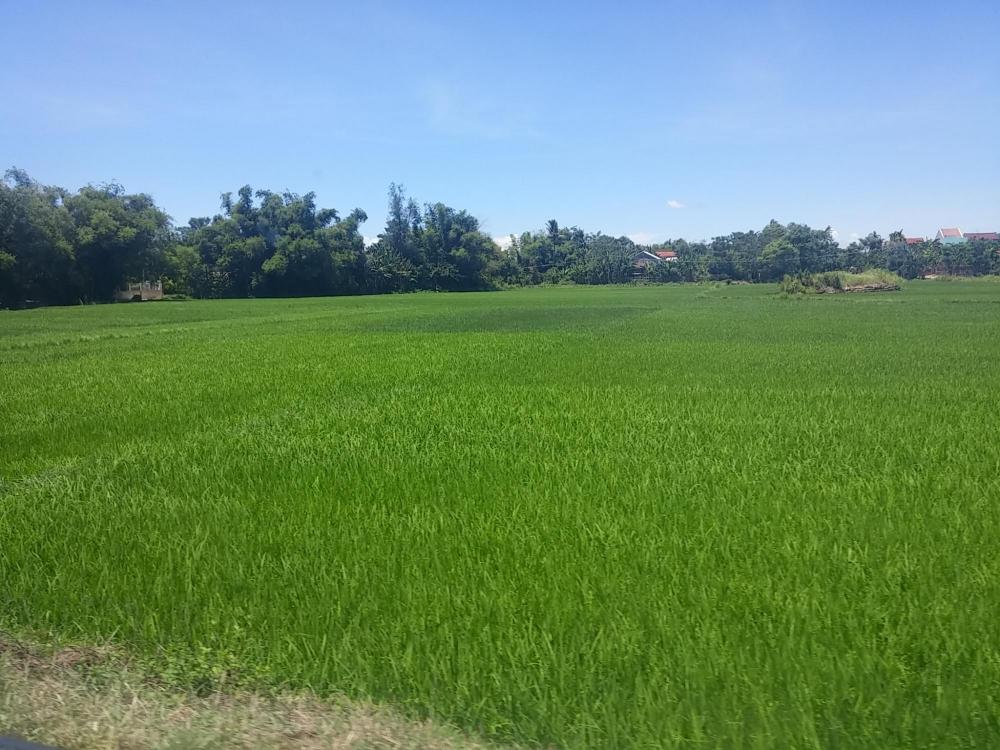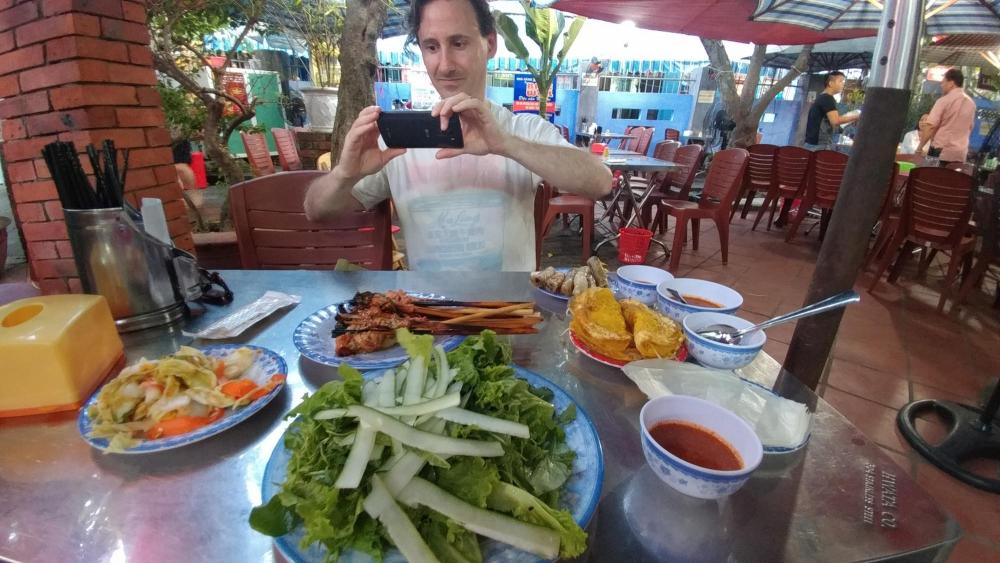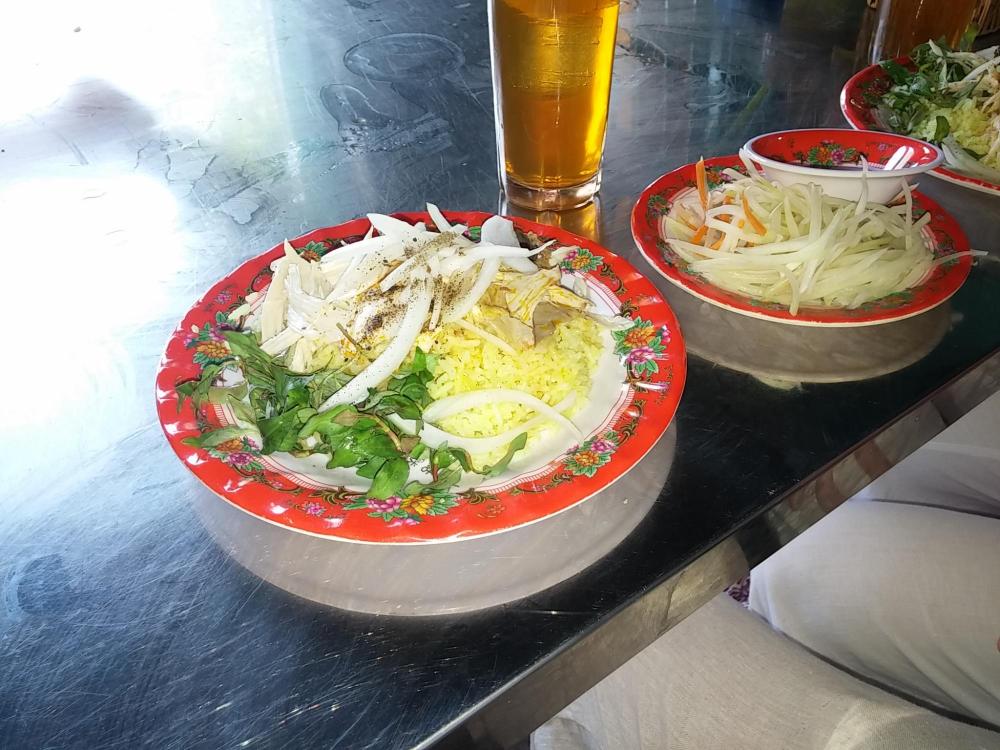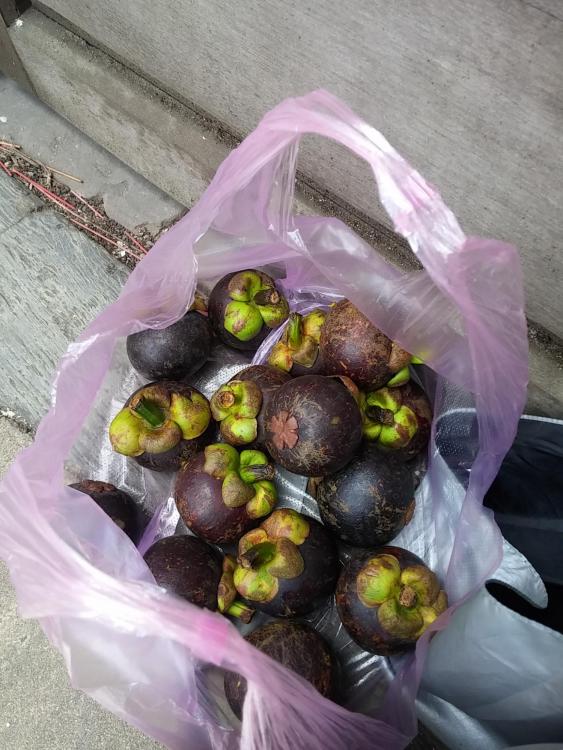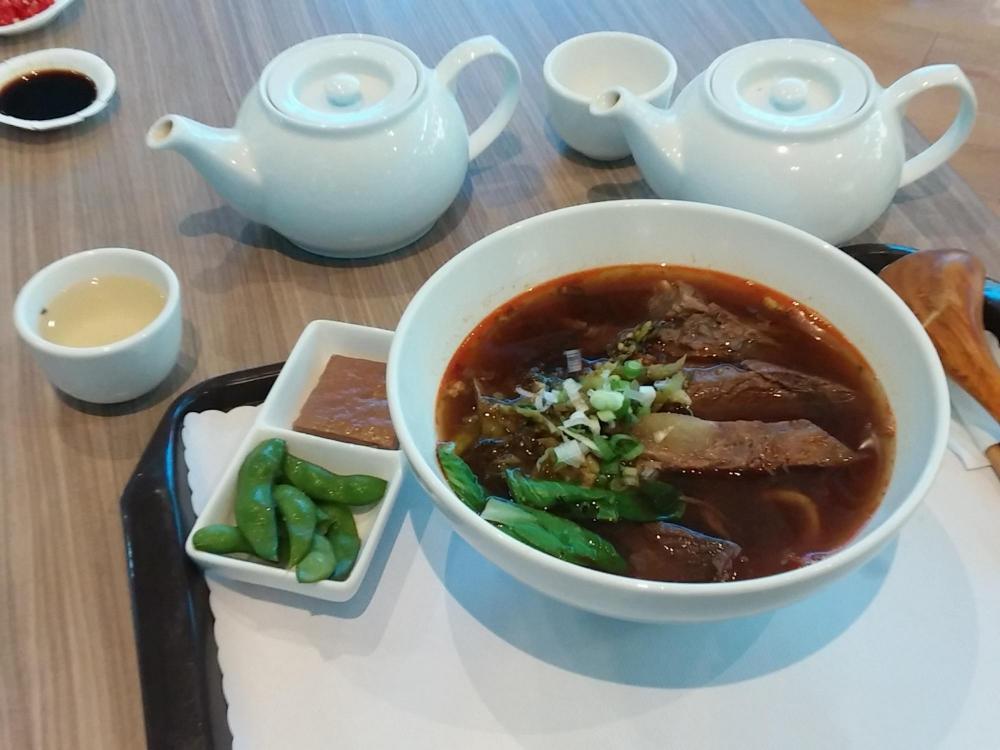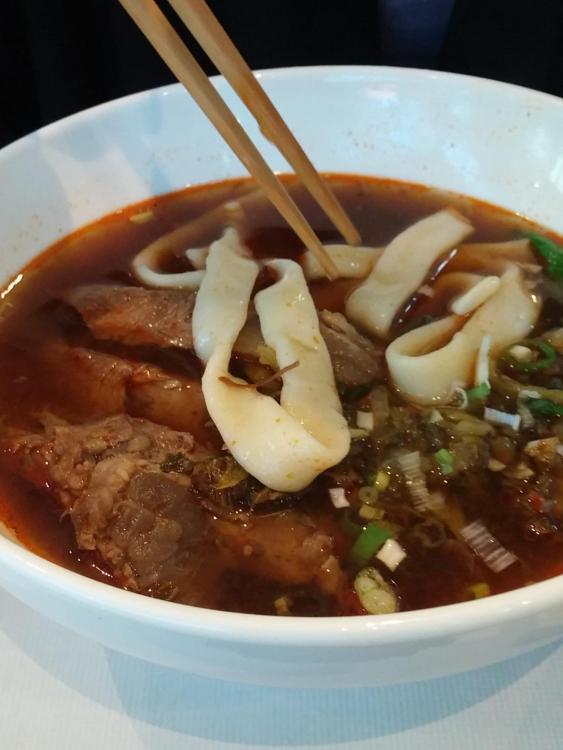
KennethT
participating member-
Posts
6,941 -
Joined
-
Last visited
Content Type
Profiles
Forums
Store
Help Articles
Everything posted by KennethT
-
Week in coastal Central Vietnam foodblog
KennethT replied to a topic in Elsewhere in Asia/Pacific: Dining
If anyone wants to see some other photos of ours, my wife has been posting a bunch on facebook, some using the hashtag #sweatcontest2017 -
Week in coastal Central Vietnam foodblog
KennethT replied to a topic in Elsewhere in Asia/Pacific: Dining
Yep! Not really impressive skills needed with these ridiculously tender, sweet and juicy mangoes... You don't even have to chew! -
Week in coastal Central Vietnam foodblog
KennethT replied to a topic in Elsewhere in Asia/Pacific: Dining
Taking some time to relax in the room with some A/C to get out of the heat (it's been 95 to 100F and a heat index of about 120F the whole time we've been here)... Going to enjoy this nice tea set and some fruit in our room... Ridiculously good mango. -
Week in coastal Central Vietnam foodblog
KennethT replied to a topic in Elsewhere in Asia/Pacific: Dining
Tftc, I hope so! I cut down the basil tree because it drinks just way too much, so the remaining pkants should be fine unless I have a pump failure or something, which isn't likely. While I'm here I'm kerping an ete out fir any potential new roomates... -
Week in coastal Central Vietnam foodblog
KennethT replied to a topic in Elsewhere in Asia/Pacific: Dining
@Shelby I was wondering why I didn't see you here... If I hadn't seen you post in other topics, I would have gotten worried about you! I'll definitely talk more in detail about the pork toast, everything else, and more but I'm waiting to get home so I can stop typing on this annoying cell phone and I can get all the photos together from 3 different sources... This part us just the teaser... Stay tuned! -
Week in coastal Central Vietnam foodblog
KennethT replied to a topic in Elsewhere in Asia/Pacific: Dining
I don't think I've ever seen a "salad" in Vietnam. Usually herbs and greens are accompaniments to a certain dish. I've definitely run into the fish mint (diep ca in Vietnamese) several times - but it's always buried among a variety of herbs and greens that accompany something. But my experience is certainly limited compared to a local's, so maybe I've just never seen it? -
Week in coastal Central Vietnam foodblog
KennethT replied to a topic in Elsewhere in Asia/Pacific: Dining
Bun mam nem!!!!! I can't wait until I get home to a proper computer (actually I don't want to go home but for the purpose of this post uitt made my point better) to write about this stuff! -
Week in coastal Central Vietnam foodblog
KennethT replied to a topic in Elsewhere in Asia/Pacific: Dining
One might think that this is a boring looking plate of fried noodles with beef, and it was, but who cares when it came with this view! -
Week in coastal Central Vietnam foodblog
KennethT replied to a topic in Elsewhere in Asia/Pacific: Dining
In someone's back yard area, I thought I saw more dew moistened rice papers (see Saigon blog for more info) but I think they're sweet potato crackers drying in the sun. They're very popular here as you see tons of vendors on the street grilling them over charcoal. -
Week in coastal Central Vietnam foodblog
KennethT replied to a topic in Elsewhere in Asia/Pacific: Dining
-
Week in coastal Central Vietnam foodblog
KennethT replied to a topic in Elsewhere in Asia/Pacific: Dining
To all those who think that all Vietnamese food is "just so healthy," I give you Deep Fried Pork Bread or Banh Mi Cha Chien -
Week in coastal Central Vietnam foodblog
KennethT replied to a topic in Elsewhere in Asia/Pacific: Dining
-
Week in coastal Central Vietnam foodblog
KennethT replied to a topic in Elsewhere in Asia/Pacific: Dining
-
Am I the only one who thinks cooking beef in ghee is slightly ironic?
-
While I am eating them by the boatload now, I am jealous of those eho can get them anytime they want while in season. Unfortunately, the US has yhis ridiculous notion that importing fresh fruit from Asia will either eradicate humans as a species or will bring our economy to a grinding halt. So they can only be imported as frozen. Mangosteens are notoriously difficult to cultivate.. An enterprising farmer tried to create sn orchard in Puerto Rico (thus enabling direct import into US fresh) but the trees nevrr took... Plus it takes the tree years from planting to fruit set, so it's a big investement - especially considering if it might not take hold at all.
-
The vendor at the market today did it by feel. She gave each one a squeeze before putting it in the bag. It should be firm but have some give to it when pressed with a finger around the equator. Then, when you release your finger, it should come back - sort of like pressing a rusen dough. The funny thing is that in all the times I've bought them in SE asia, in several countries, I've never picked one myself. Always, the market vendor does it and it doesn't seem like they would let you do it if you wanted to. Except, the one time I got them in a supermarket in Bangkok, at my concierge's suggestion... There they had them in mesh bags... They were among the most expensive ones I've had and definitely the worst quality. Those market ladies know what they're doing.
-
@DarienneThis is my favorite fruit of all time.. mangosteen. I'm from NY so I never see these at home, aside from frozen ones available in Chinatown for around $10 for 3 pcs.. And they're vpreviously frozen and horrible! Unfortunately, they seem to only be available fresh in Asia, and they are primarily grown in SE Asia, like Malaysia and Thailand...
-
Week in coastal Central Vietnam foodblog
KennethT replied to a topic in Elsewhere in Asia/Pacific: Dining
-
Week in coastal Central Vietnam foodblog
KennethT replied to a topic in Elsewhere in Asia/Pacific: Dining
-
-
Week in coastal Central Vietnam foodblog
KennethT replied to a topic in Elsewhere in Asia/Pacific: Dining
-
Week in coastal Central Vietnam foodblog
KennethT replied to a topic in Elsewhere in Asia/Pacific: Dining
So we landed brightvand early at 4:15am in Taiwan. Unfortunately, the free beach chairs I had been so fond of in the past are gone, so we're having trouble finding a comfy place to hang out until the food place opens at 6. On the bright side, our flight to Saigon is delayed about a half hour, so we can have a more relaxing breakfast... -
Week in coastal Central Vietnam foodblog
KennethT replied to a topic in Elsewhere in Asia/Pacific: Dining
We will be in Hoi An and Hue primarily. We'll probably spend a half day or so in Danang. -
Just catching up on this now... Are there any lactose intolerant Russians? What do they do with all that sour cream?
-
OK.... here we go again!!! While this post is a bit premature (we don't take off until around 1:30AM tonight), I am extremely excited so I figured I'd just set up the topic now. As in previous foodblogs, I may post a bit from time to time while we're there, depending on how good my internet connection is, and how much free time I have... but the bulk of posting will really get started around July 9th - the day after we get home (hopefully without too much jetlag!!!)


